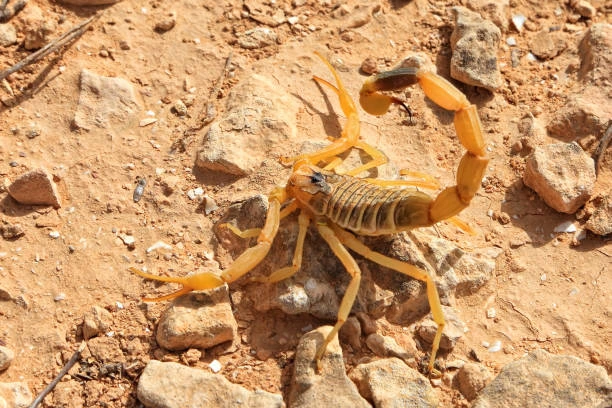Table of Contents
Scientific Classification
| Kingdom | Animalia |
| Phylum | Arthropoda |
| Class | Arachnida |
| Order | Scorpiones |
| Family | Buthidae |
| Genus | Leiurus |
| Species | L. quinquestriatus |
| Scientific Name | Leiurus quinquestriatus |
1. Description
The Deathstalker Scorpion is one of the most notorious arachnids on the planet, known for its powerful venom. With a sleek, agile body that can range from a pale yellow to a yellow-green hue, this creature is quite striking. Its segmented tail culminates in a venomous stinger, ready to defend itself. Adults usually measure between 5 to 11 cm in length. Despite their fearsome reputation, these scorpions are actually quite timid and prefer to steer clear of trouble unless they feel threatened. The name “Deathstalker” certainly evokes images of a fearsome predator, but it’s worth noting that fatalities among humans are rare, especially when medical help is available.
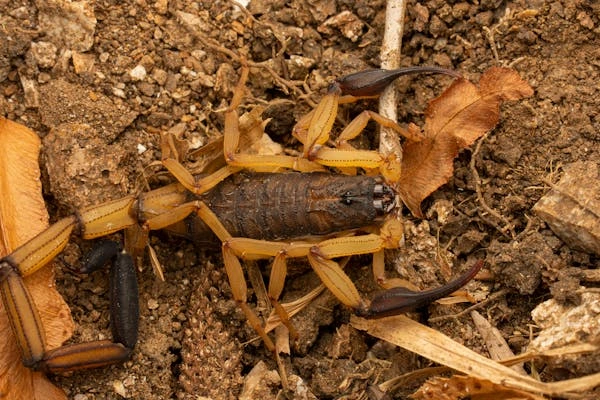
2. Distribution
The Deathstalker can be found in the arid regions of North Africa and the Middle East. Its habitat stretches across several countries, including Algeria, Egypt, Ethiopia, Mali, Niger, Somalia, Sudan, and even parts of Asia like Iran, Iraq, Israel, Jordan, Lebanon, Pakistan, and Saudi Arabia.
3. Habitat
The Deathstalker scorpion has a real fondness for hot, dry environments. You can typically find it thriving in deserts, scrublands, and semi-arid rocky areas. To escape the scorching heat during the day, it cleverly hides under rocks, in burrows, or tucked away in crevices, only coming out at night to hunt. Interestingly, some of these scorpions have even been spotted near human settlements, lured in by the presence of insects and other tasty prey.
4. Diet
The Deathstalker is a fierce meat-eater, primarily hunting down insects, spiders, small lizards, and various arthropods. With its powerful pincers, it grabs hold of its prey and then uses its stinger to inject venom, effectively immobilizing or killing it. Interestingly, the digestion process begins outside its body. The Deathstalker injects digestive enzymes into its catch, which breaks it down into a liquid form, making it much easier to consume.
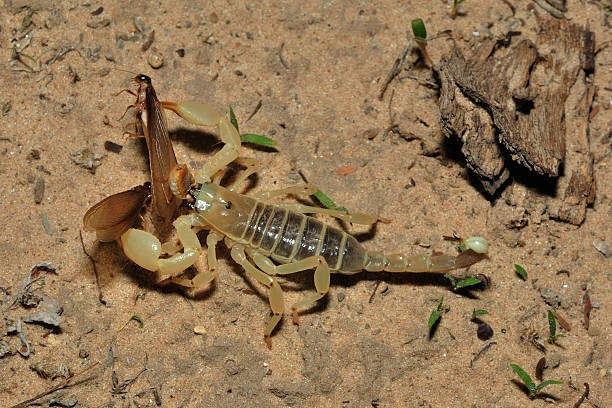
5. Behavior
The Deathstalker, being a nocturnal creature, comes alive at night. It prefers to go solo, hunting, mating, and finding shelter all on its own. When it feels threatened, it raises its pincers and curls its tail as a defense mechanism. While it typically steers clear of humans, it won’t hesitate to sting if it feels provoked or in danger.
6. Lifespan
In the wild, Deathstalker scorpions typically live around 4 to 6 years. But with proper care in captivity, they can enjoy a longer life. Their lifespan is influenced by various factors, including their environment, threats from predators, availability of food, and how successful they are at reproducing.
7. Reproduction and Lifecycle
Deathstalkers mate through a sexual process. The male performs a dance called the “promenade à deux.” During this dance, he leads the female until he deposits a spermatophore. After internal fertilization, the female carries the embryos for several months. Then, she gives birth to 20 to 30 live young. The newborns climb onto the mother’s back until their first molt, a period when they are most vulnerable.
Young scorpions become independent after their first molt. They must take care of themselves. Maturation can take up to a year or longer, depending on environmental conditions.
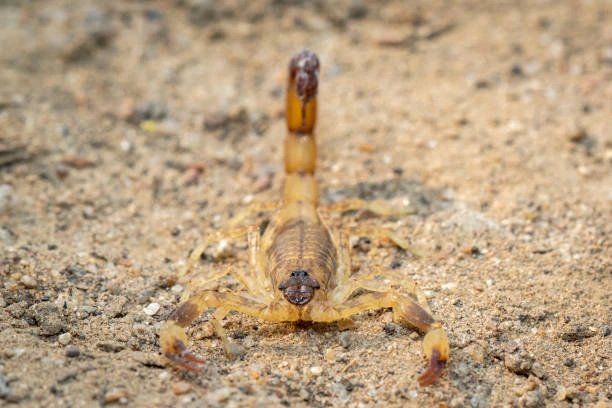
8. Predators
Despite its venom, the Deathstalker has several predators. Owls, monitor lizards, shrews, and bats can all prey on it. Some larger arachnids or scorpions may also attack smaller individuals.
9. Adaptations
The Deathstalker is remarkably adapted to desert life. Key adaptations include:
- Nocturnality: Helps avoid daytime heat and predators.
- Exoskeleton: Its cuticle minimizes water loss, crucial for desert survival.
- Venom: Used not only for defense but to immobilize prey efficiently.
- Specialized hairs on its legs sense vibrations. This helps it find prey or threats, even in total darkness.
10. Conservation Status
The IUCN hasn’t yet evaluated the conservation status of the Deathstalker scorpion. This is largely because the species is still quite common and isn’t currently facing any significant threats to its population. That said, habitat destruction and human encroachment could become potential risks in the future.
11. Nest
Deathstalkers have a unique way of finding shelter; they don’t build traditional nests like many other creatures. Instead, they seek out natural hideaways such as crevices, rocks, and burrows to take refuge temporarily. These spots not only shield them from predators but also help them cope with tough environmental conditions. Interestingly, they tend to return to the same familiar shelters, which shows they have a good sense of spatial memory.
12. Mating Season
Mating season typically kicks off during the warmer months, especially from late spring through summer. This is when both male and female creatures are at their most active. The rise in temperatures not only boosts reproduction rates but also aids in the release and transfer of spermatophores.
13. Breeding
After mating, gestation lasts several months. A single female may breed once per year, producing a large brood of offspring. After giving birth, the mother carries her young on her back. This keeps them safe until they molt for the first time. Cannibalism is common if space or food is limited, both from the mother or among siblings.
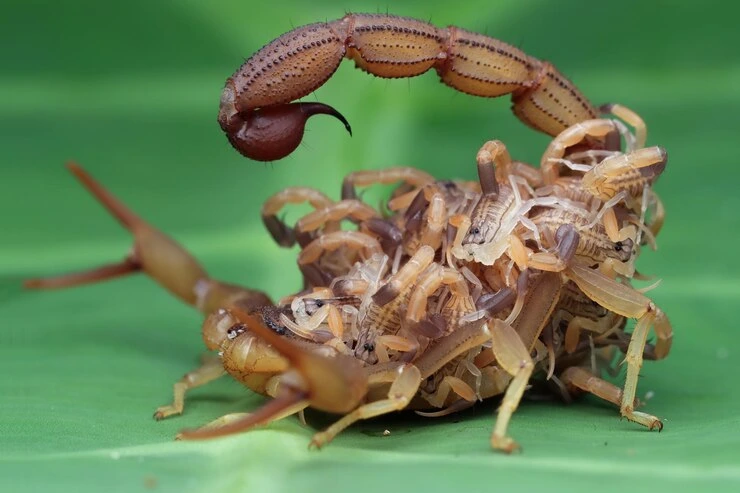
14. Interesting Facts
Venom in medicine: The venom of the Deathstalker scorpion contains chlorotoxin, a compound that shows promise in treating brain tumors and developing new pain relief medications.
Very valuable: When you consider its weight, the venom is among the most expensive substances on the planet, largely due to its medicinal potential.
UV Glow: If you shine ultraviolet light on most scorpions, they’ll glow in a striking blue-green hue, adding a bit of eerie beauty to their appearance.
Sting vs. Bite: Scorpions are known for their stings, not bites. The Deathstalker has a fearsome reputation, but thanks to modern medicine, its sting is rarely life-threatening.
Environmental role: This creature plays a crucial role in managing pest populations, including insects and spiders, which helps maintain ecological balance in its natural habitats.
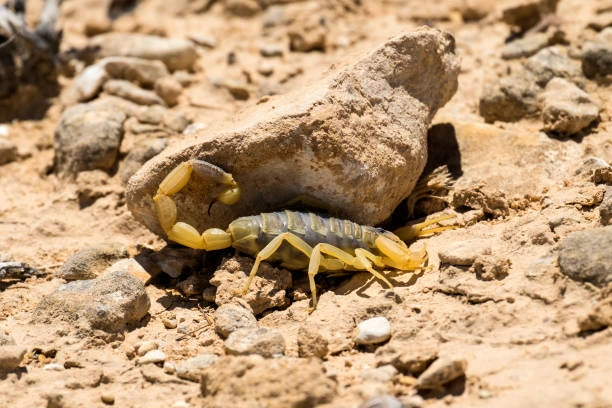
The Deathstalker is a captivating yet often misunderstood creature. While its venomous sting can be intimidating, it also contributes to medical research and supports the ecosystem. To truly appreciate the wonders of nature, we need to respect these creatures’ space and understand their behavior.

